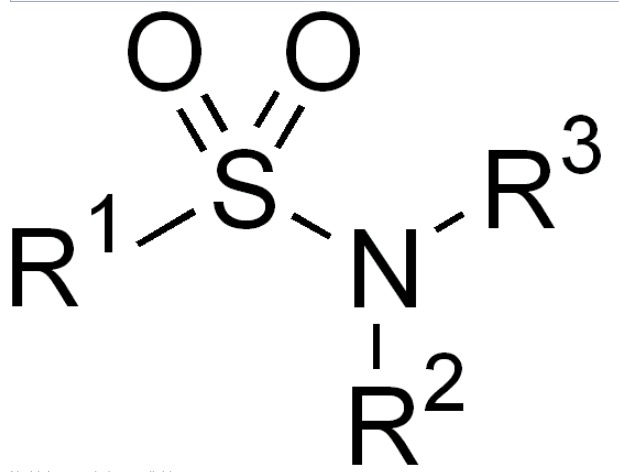Playlist
Show Playlist
Hide Playlist
Cystitis: Definition, Epidemiology & Etiology
-
Slides Cystitis InfectiousDiseases.pdf
-
Download Lecture Overview
00:00 In our discussion of urinary tract infections, we turn to cystitis. 00:06 To define it we'd call it a clinical syndrome characterized by dysuria, frequency, urgency, and occasionally suprapubic tenderness caused by inflammation and infection of the bladder. 00:21 It's a disease that's much more common in women than men. 00:25 In fact, women have an incidence of asymptomatic bacteriuria of around 1 to 3%. 00:35 Up to 60% of women have had at least one episode of cystitis during their lifetime. 00:43 And 10% have it once a year. 00:46 The peak incidence is among young, sexually active women, 18-24 years of age and 2-5% have recurrent problems with cystitis. 01:00 Men, on the other hand, have a very low prevalence of cystitis -- less than 0.1 %. 01:09 And when a man has cystitis, we have to look for a complication because there's usually some kind of obstructive uropathy duplicating collecting system, some kind anatomical explanation for cystitis and we have to work them up for urologic abnormalities. 01:30 The lack of circumcision predisposes some men to cystitis and among men who have sex with men anal insertive sexual intercourse is a predisposing factor. 01:47 95% of the time, the cause is a single species of bacterium, so polymicrobial infections are unusual. 01:56 The most common bug is, as you might expect, Escherichia coli. 02:02 Now, we have lots of E. coli in our intestine -- lots of them. 02:07 But only about 20% of this E. coli are what we would call uropathogenic E. coli. 02:16 So these E. coli are different. 02:19 They possess virulence factors that the other E. coli do not have that allow them to colonize and invade the urinary tract. 02:28 Most of them have what we call Type 1 fimbriae -- this fringe that surrounds the surface. 02:34 And this group of fimbria can attach to mannose residues which we find commonly on the glycoproteins on urothelium. 02:44 And so they can attach to urothelium and they're not washed away in the urinary stream. 02:51 These are called mannose-sensitive E. coli, and the other E. coli's don't have them. 03:00 Furthermore, the normal urinary tract has a defense mechanism. 03:07 There is a glycoprotein present in trace amounts in urine. 03:12 It's called uromodulin. 03:14 The old name is Tamm-Horsfall protein, and this uromodulin has mannose residues on it. 03:23 So these mannose-sensitive E. coli will bind to the uromodulin and then be washed away in the urine stream. 03:33 So they never get a chance to attach because of the uromodulin that's present normally in urine. 03:42 Now recurrent and complicated cystitis leads to an increased incidence of more resistant organisms, that we don't usually find causing cystitis. 03:55 That would be, for example, Proteus, Pseudomonas aeruginosa, Klebsiella pneumoniae, Enterobacter species, and even some resistant E. coli, and among the Gram-positives -- Enterococcus.
About the Lecture
The lecture Cystitis: Definition, Epidemiology & Etiology by John Fisher, MD is from the course Urinary Tract Infections. It contains the following chapters:
- Cysitis – Definition and Epidemiology
- Cysitis – Etiology
Included Quiz Questions
Which of the following patients is most likely to develop cystitis?
- A sexually active healthy 22-year-old woman
- A healthy 12-year-old girl
- A 4-year-old boy with constipation
- A 78-year-old man with hypertension
- A 65-year-old woman with well controlled diabetes
Which of the following pathogens is the most common cause of uncomplicated cystitis?
- Escherichia coli
- Proteus species
- Pseudomonas aeruginosa
- Enterobacter
- Klebsiella
Which of the following substances within the normal urine may provide defense against urinary tract infections with some types of Escherichia coli?
- Tamm-Horsfall protein
- Glycosaminoglycan
- Lactoferrin
- Immunoglobulin heavy chains
- Albumin
Which of the following statements regarding the epidemiology and risk factors of urinary tract infection is MOST ACCURATE?
- Men with cystitis are more likely to have underlying urinary tract abnormalities.
- Recurrent cystitis is more common in men than in women.
- Lack of circumcision is not a risk factor for urinary tract infections in men.
- Men who have sex with men are at a lower risk of cystitis.
Which of the following is a surface virulence factor of uropathogenic Escherichia coli?
- Type 1 fimbriae
- Cytotoxic necrotising factor 1
- Secreted autotransporter toxin
- Cytolysin A
- Yersiniabactin
Customer reviews
3,5 of 5 stars
| 5 Stars |
|
1 |
| 4 Stars |
|
0 |
| 3 Stars |
|
0 |
| 2 Stars |
|
1 |
| 1 Star |
|
0 |
If I´m paying for people to read the slides, Im out of this, TBH this whole Lecturio actually is super good only for just a few doctors, like Dr. Raj, and some others, but this man... really? reading everything? I´m actually pissed off.
an easy and clear concept in brief.His speech quality is sharp.






